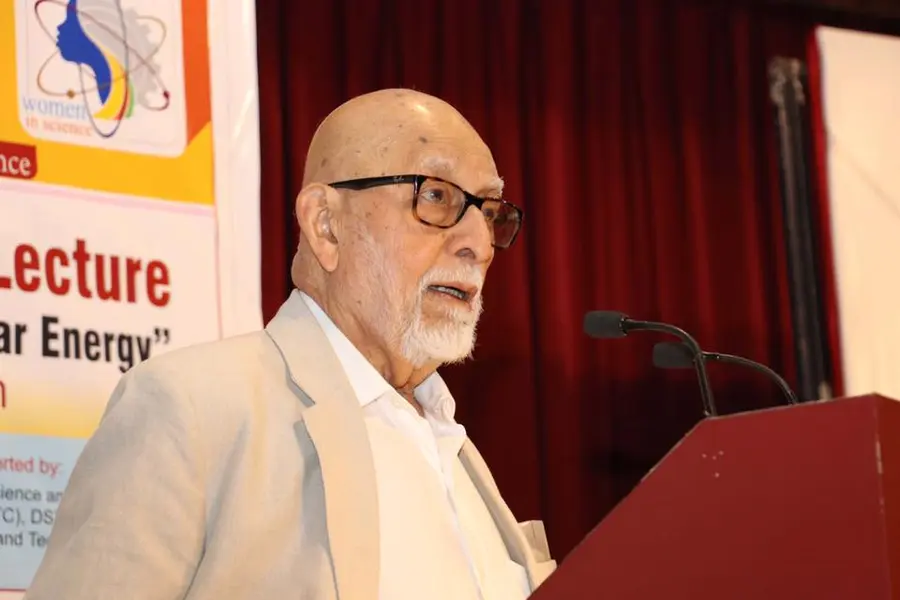
Eminent nuclear scientist Malur Ramasam Srinivasan, who played a pivotal role in shaping India’s nuclear power programme and in the development of the indigenous Pressurized Heavy-water Reactor (PHWR), passed away early Tuesday morning in Tamil Nadu’s Ooty. He was 95.
His daughter, Sharda Srinivasan, confirmed the news in a heartfelt Facebook post, stating that he had suddenly taken ill on Monday night and died peacefully at a hospital at 4am on Tuesday. “Appa… you always said that work was duty and that I should not miss a day of work regardless of other things… but still this is not fair,” she wrote, adding that her mother was by his side at the time of his passing.
Born on January 5, 1930, in Bangalore (now Bengaluru), Srinivasan began his illustrious career in September 1955 when he joined the Department of Atomic Energy (DAE). He worked closely with Dr Homi Bhabha, the father of India’s nuclear programme, on the country’s first nuclear research reactor, Apsara, which achieved criticality in 1956.
Over the decades, Srinivasan rose to become one of India’s most influential nuclear scientists. He was the chief project engineer of the Madras Atomic Power Station in 1967 and later served as the director of DAE’s Power Projects Engineering Division in 1974. He became the chairman of the Nuclear Power Board in 1984, playing a critical role in the planning, execution, and operation of several nuclear power projects.
In 1987, Srinivasan was appointed chairman of the Atomic Energy Commission and secretary of the DAE. That same year, he became the founding chairman of the Nuclear Power Corporation of India Limited (NPCIL), under whose leadership 18 nuclear power units were constructed—an achievement that significantly expanded India’s nuclear energy infrastructure.
His international contributions were equally notable. From 1990 to 1992, he served as a senior advisor at the International Atomic Energy Agency (IAEA) in Vienna. He was also a member of India’s Planning Commission from 1996 to 1998 and served on the National Security Advisory Board during two separate terms (2002-2004 and 2006-2008). Additionally, he was one of the founding members of the World Association of Nuclear Operators.
A recipient of the Padma Vibhushan, India’s third-highest civilian award, Srinivasan came from a humble background as the third of eight siblings. He completed his early education in Mysore and earned his bachelor’s degree in mechanical engineering in 1950 from what is now the University of Visvesvaraya College of Engineering. He went on to pursue his doctoral studies at McGill University in Canada, completing a PhD in gas turbine technology in 1954.
Srinivasan’s legacy is marked by his tireless dedication to India’s scientific and strategic advancement, particularly in nuclear energy. He leaves behind a legacy of innovation, leadership, and national service that will continue to inspire generations of scientists and engineers.
His contributions have left an indelible mark on India’s journey as a nuclear-capable nation, earning him a place among the country’s most respected scientific minds.
Sources By Agencies

